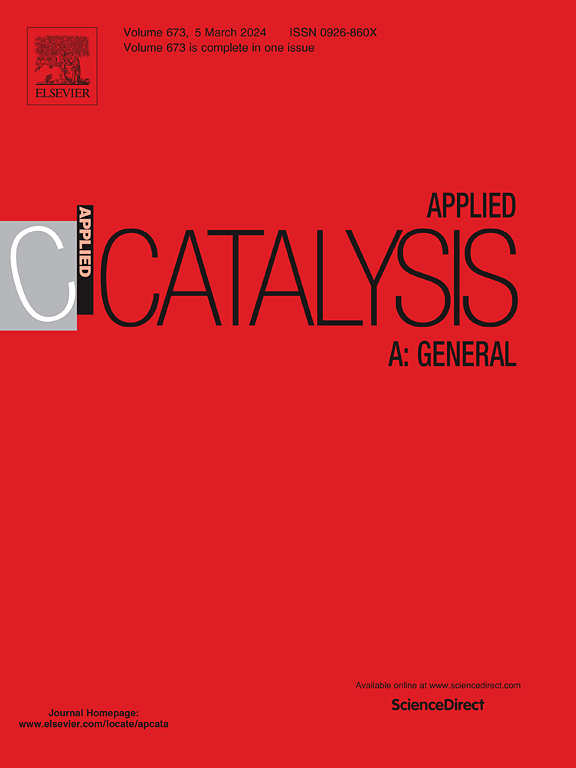Catalytic acetalization of glycerol to solketal using mesoporous silica, Cu-FSM-16
IF 4.8
2区 化学
Q2 CHEMISTRY, PHYSICAL
引用次数: 0
Abstract
FSM-16 and copper-incorporated Cu-FSM-16 catalysts with variable copper loadings were developed through the impregnation techniques respectively. It was used by acetalization reaction for the transformation of glycerol to solketal. The surface morphology, mesoporous structure, composition, and porosity of the prepared catalysts have been characterized by the SEM-EDAX, TEM, XRD, FTIR, XPS, and BET- surface area studies. Again, the quantification of acid sites of the catalyst was obtained from the Hammidt titration method. Furthermore, the main product (solketal) was present in the solution that was analyzed by NMR results. Moreover, maximum yield (76 %) is confirmed by using parameters with catalyst amount 7 wt% of glycerol quantity, molar ratio glycerol to acetone 1:2, time taken 2.5 h, and temperature 333 K. This catalyst has been shown consistent activity and reusability up to 4 cycles. LHHW kinetic model was also developed to find out the activation energy.
介孔二氧化硅Cu-FSM-16催化甘油缩醛制溶胶
通过浸渍技术分别制备了不同铜载量的FSM-16和铜掺杂Cu-FSM-16催化剂。用它进行缩醛化反应,将甘油转化为索酮。通过SEM-EDAX、TEM、XRD、FTIR、XPS和BET-表面积研究对催化剂的表面形貌、介孔结构、组成和孔隙率进行了表征。同样,用哈密特滴定法对催化剂的酸位进行定量。此外,通过核磁共振结果分析,溶液中存在主要产物(索酮)。催化剂用量为甘油的7 wt%,甘油与丙酮的摩尔比为1:2,反应时间为2.5 h,反应温度为333 K,收率为76 %。该催化剂在4次循环中表现出稳定的活性和可重复使用性。建立了LHHW动力学模型,求出了活化能。
本文章由计算机程序翻译,如有差异,请以英文原文为准。
求助全文
约1分钟内获得全文
求助全文
来源期刊

Applied Catalysis A: General
化学-环境科学
CiteScore
9.00
自引率
5.50%
发文量
415
审稿时长
24 days
期刊介绍:
Applied Catalysis A: General publishes original papers on all aspects of catalysis of basic and practical interest to chemical scientists in both industrial and academic fields, with an emphasis onnew understanding of catalysts and catalytic reactions, new catalytic materials, new techniques, and new processes, especially those that have potential practical implications.
Papers that report results of a thorough study or optimization of systems or processes that are well understood, widely studied, or minor variations of known ones are discouraged. Authors should include statements in a separate section "Justification for Publication" of how the manuscript fits the scope of the journal in the cover letter to the editors. Submissions without such justification will be rejected without review.
 求助内容:
求助内容: 应助结果提醒方式:
应助结果提醒方式:


